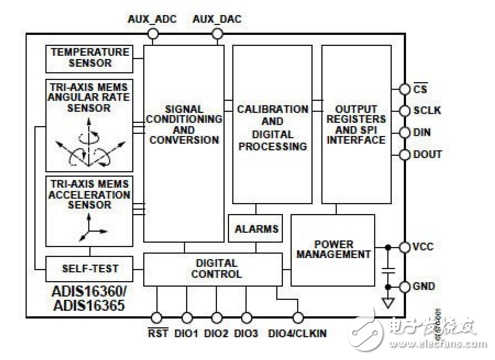
资料下载

惯性传感器概述性能、尺寸和功率优势
惯性传感器概述性能、尺寸和功率优势
历史上,惯性传感器以精密机械陀螺仪和加速度计的形式被降级,用于在需要高性能的航空航天应用中,甚至更高的价格标签。今天,基于MEMS技术的进步,惯性传感器已经进入工业、通信、汽车、医疗和消费等领域。考虑到这些新设备的尺寸、功率和成本优势,它们有时比以往同类产品的性能稍显次要。然而,在大多数情况下,这种性能损失开始蒸发。
惯性传感器检测和测量加速度、倾斜、冲击、振动、旋转和多自由度运动。这些加速度计和陀螺仪,以及智能传感器,代表了广泛的质量,并根据应用需求,提供单独或作为综合惯性测量单位。一个重要的注意事项是加速度计测量特定的力和陀螺仪测量角速率,没有外部参考。如果有相对于环境特征的力或角速率的测量,则该装置不是惯性传感器。
reportlinker.com最近估计,在2009元847m运动传感器的销售将增长到2015美元,报告2.56b,“…这将市场战略的应用有望依靠三轴加速度计和三轴陀螺仪在单包…”介绍三轴设备越来越多,从iPhone和Android智能手机的应用程序,以游戏,片,和远程控制。

MEMS inertial sensors are used to detect and measure five distinct motions – acceleration, tilt, rotation, vibration, and shock.
Acceleration sensing refers to the movement of an object from one point to another along a straight line or axis and includes translational movement such as position and orientation.
Tilt sensing measures inclination or angle of change relative to gravity.
Rotation sensing measures the angular rate in degrees per second of change, or how quickly an object turns in reference to the three axes--yaw, pitch, and roll.
Vibration sensing detects acceleration/deceleration.
Shock sensing measures and detects sudden impact.
Multiple degrees-of-freedom (DoF) sensing relies on the combined input of multiple sensing types—with a maximum of six degrees of freedom.
声明:本文内容及配图由入驻作者撰写或者入驻合作网站授权转载。文章观点仅代表作者本人,不代表电子发烧友网立场。文章及其配图仅供工程师学习之用,如有内容侵权或者其他违规问题,请联系本站处理。 举报投诉
- 相关下载
- 相关文章






